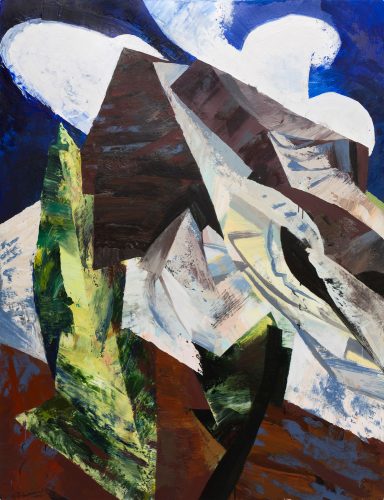
Somewhere in the late 20th century, art in America went through a cosmic shift: “Beauty” became a dirty word.
In the 1950s, a middlebrow, slightly romanticized version of modernism dominated mainstream American culture. Writers like John Steinbeck, composers like Leonard Bernstein and painters like Jackson Pollock produced works that were infused with beauty and hope and spoke to ordinary people.
All that came to an end as the century closed out and those artistic hopes and dreams crashed into the cynicism and irony of postmodernism, with its emphasis on conceptual works and roots in critical theory. Beauty was out. Ideas were in.
Catching the last gasp of the middlebrow culture that once thrived here is one of the premises behind Visual Magic: An Oregon Invitational, a new show that opens with a reception from 7 to 8 pm Jan. 18 and runs through May 12 at the University of Oregon’s Jordan Schnitzer Museum of Art.
The exhibit looks at work from 45 living painters who began or expanded their artistic careers in Oregon in the 1960s and ’70s.
A collaboration with the George D. Green Art Institute, the exhibit grows out of a smaller show mounted by the institute under a similar name, Visual Magic: Hand Made Pictures, at the Northwest Academy in Portland in 2015, says Danielle Knapp, the Schnitzer’s McCosh associate curator.
A catalog statement Knapp wrote for the earlier show might apply equally to the new exhibit.
“The works included in Visual Magic are beautiful,” she said. “They transfix. Bewilder. Delight. More importantly they are original manifestations of deeply realized personal visions. In some instances, they are unlike anything ever seen before.”
Included in the Schnitzer exhibit, which is to be mounted in the museum’s large Barker Gallery, is work by such familiar local artists as Jon Jay Cruson, Margaret Coe, Kacey Joyce, Craig Cheshire and Kenneth O’Connell, as well as regional art stars like James Lavadour and Lucinda Parker.
That doesn’t mean you should expect to see nothing but traditional painting.
Portland artist Robert Dozono, for example, makes his large landscape paintings included in Visual Magic by gluing the garbage he produces in day-to-day life to canvases and then painting over it. Stand close and you see a collage of used toothpaste tubes and other plastic detritus; back up and you see a river scene.
“I think we don’t respect or take enough responsibility for our natural environment. In this age and our economy, it is almost impossible not to waste. I almost wish that we could return to a time where no one wasted and reused everything,” Dozono once explained in an artist statement.
Having come of age a half-century ago, the artists in this show are not youngsters. Two — Edwin Koch and Janet Reaves — have died since the roster was selected. The oldest is Portland painter, printmaker and ceramicist George Johanson, who was born in 1928.
“By the 1960s he’d already been to New York and come back,” Knapp says.